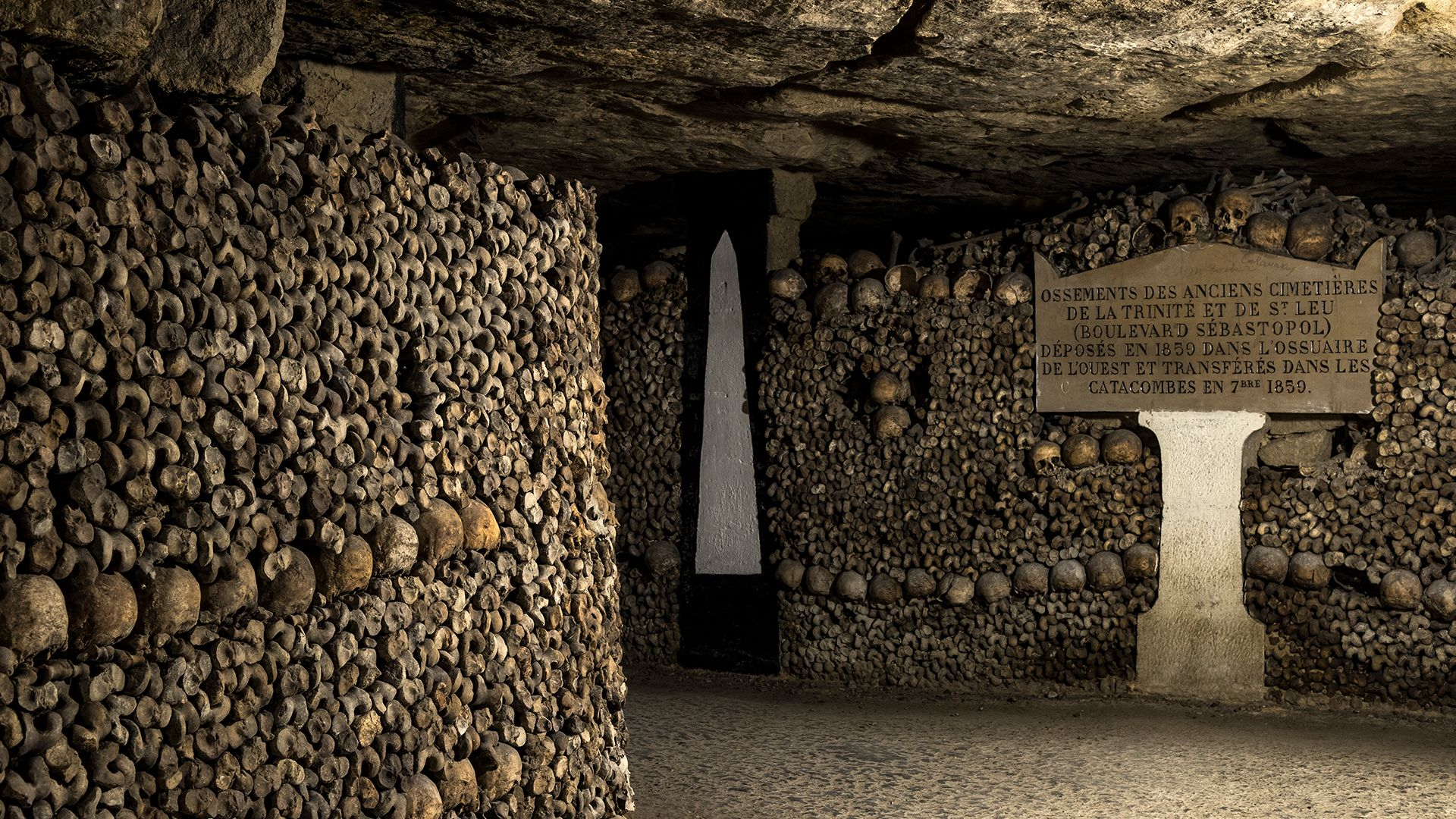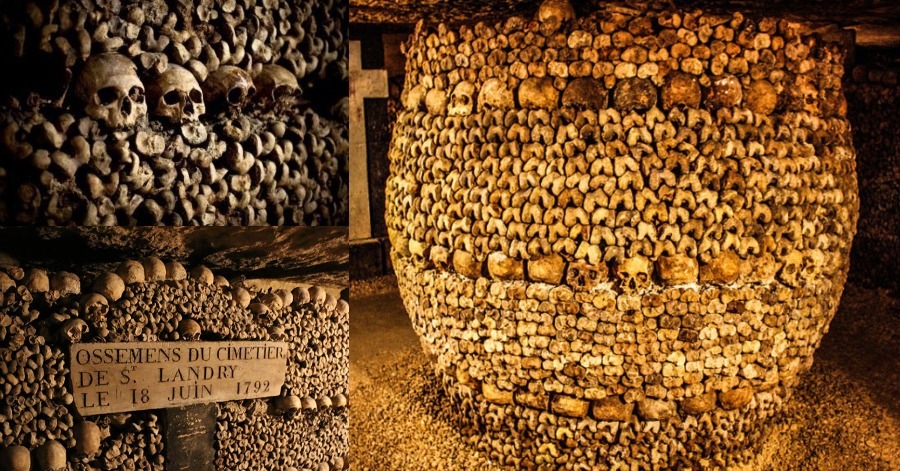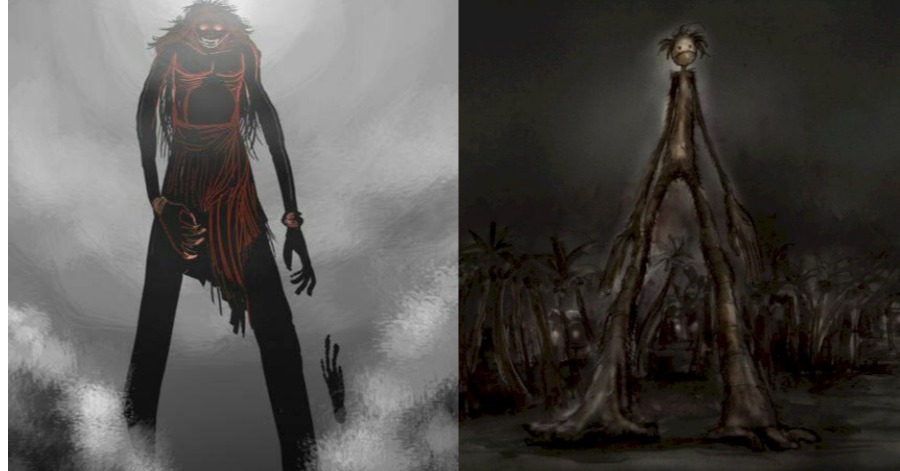Paris Catacombs are actually underground ossuaries in Paris, France, which hold the remains of more than six million peoplein a small part of a tunnel network built to consolidate Paris’ ancient stone quarries. Extending south from the Barrière d’Enfer or better known as Gate of Hell former city gate, this ossuary was created as part of the effort to eliminate the city’s overflowing cemeteries.
Preparation work began shortly after a 1774 series of gruesome Saint Innocents-cemetery-quarter basement wall collapses added a sense of urgency to the cemetery-eliminating measure and from the year of 1786, the nightly processions of covered wagons transferred remains from most of Paris’ cemeteries to a mine shaft opened near the Rue de la Tombe-Issoire.

The city sat directly above some 200 miles of limestone tunnels that had been carved out to provide the very stones from which the city was built. The tunnels were so extensive that by the 19th century the weight of the city above was creating giant sinkholes into which entire buildings and blocks were collapsing. In 1777 the King’s architect Charles-Axel Guillaumot was given the unenviable task of stabilizing the entire system of subterranean mine shafts in order to literally save the city from collapse. Despite the size of the challenge, Guillaumot pulled it off without much fuss. By 1785 the tunnels were stable and the remains of dead Parisians were being dug up every night and transferred into them. A priest accompanied every wagonload of remains in order to chant the Catholic “Office of the Dead” prayer cycle to ensure that the remains remained at peace.
It took two years of nightly work to empty the majority of Paris’ cemeteries and relocate the remains in the catacombs, but the transfer of bones continued up until 1859. Above ground, public works went on hold for a few years while France had a revolution, executed a lot of people, and then slowly started to rebuild. When Napoleon marched to power on the back of the Revolution he inherited a medieval city that was in the throes of rapid modernization. One of the Little Emperor’s key beliefs was that “men are only great through the monuments they leave behind them”. In this vein, he punctuated his reign with a number of grandiose public works and pieces of art, many of which helped to give rise to the concept of the “Napoleon complex”. Given that Rome, which was considered the preeminent monumental city in Europe, already had its much-vaunted system of Catacombs that intrepid tourists could visit, Napoleon decided that France needed something similar. He commissioned to turn the quarry tunnels from a labyrinthine charnel house into something that people would want to go down and see, thus giving rise to the original Paris Catacombs tours.
When quarry-men began arranging the transferred bones into ossuary decorations they had their work cut out for them. Despite the ritual with which they were transferred, the bones had simply been dumped into the tunnels in large heaps. Slowly but surely the quarrymen lined the walls with tibias and femurs punctuated with skulls which form the basis of most of the decorations that tourists see today. Both out of whimsy and to convey deeper religious messages about death, they also arranged bones in various shapes, like hearts, circles, and death heads. They erected signs which serve as commemorative plaques and carved arrows into the ceilings so the first people visiting on catacomb tours would not lose their way. Through these changes, and a clever marketing brochure published by Héricart de Thury in 1810, the Paris catacombs soon gained a reputation as one of the more affecting, and surely the most macabre place to visit in the city.
Sources: Les Catacombes De Paris.









Leave a Comment